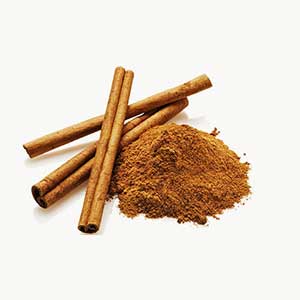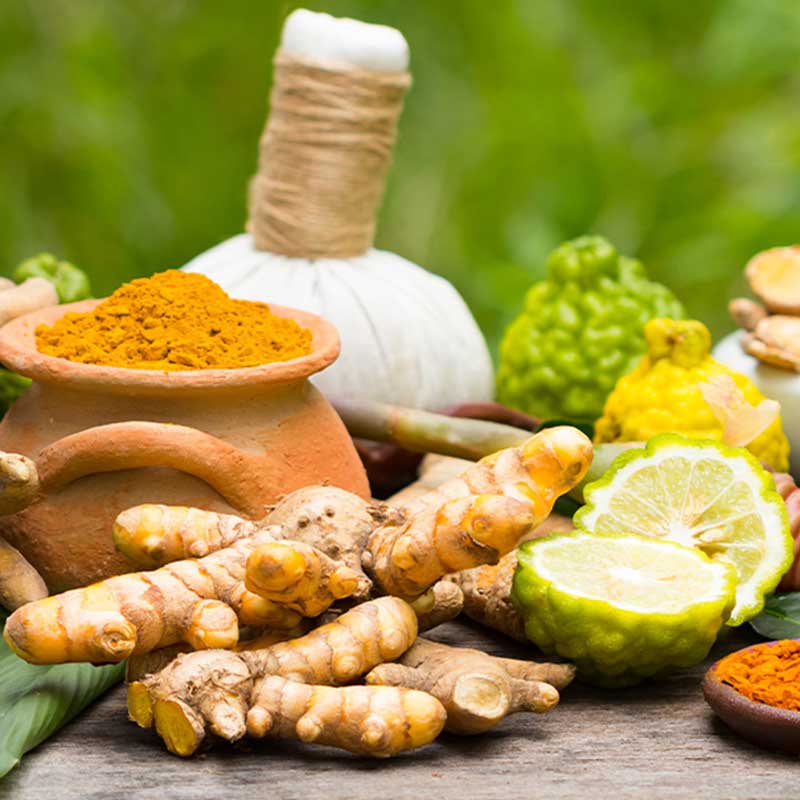
100% Safe & Ayurvedic
Ayurvedic Treatment for Diabetes
Goodness of Ancient Ayurvedic Treatment
For Free Consultation with Ayubhumi Dr. Give a Missed Call on
Get FREE Consultation for Diabetes
For Consulting Free with Ayubhumi Expert Doctor Fill the Form below. We will call you back
What is Diabetes?
According to Ayurveda, diabetes is a disease of profuse urination. There are many such diseases that Ayurveda describes in connection with the three Doshas — Vata, Pitta, Kapha. Among these diseases, diabetes is the most common. It is further split into two subcategories – Diabetes insipidus and Diabetes Mellitus.
Diabetes is known to be a severe disease that is often difficult to treat owing to the numerous complications it could come with and other organs that could be affected by it. Fortunately, there is an Ayurvedic treatment for diabetes Mellitus. Of course, there’s no way to cure diabetes permanently, however, the Ayurvedic methods can help manage it.
Since 2015, it has been estimated that 1.6 million deaths happen due to diabetes, and almost 2.2 million deaths take place due to high blood sugar levels. Diabetes is a chronic illness that happens when the body is unable to provide enough insulin for cells to function. The lack of insulin triggers excess sugar production in the blood. And this is known as glycosuria and hyperglycemia. This means that your body has way too much glucose, and it can obstruct the regular functions of your nervous system, heart, eyes, blood vessels, and kidneys.
One of the major causes of diabetes, as described by Ayurveda, is a poor diet. Diets that are heavy on sweets, sugar, dairy products, alcohol, fat, and breads are deemed unhealthy and not recommended. In other cases, diabetes can also be caused due to obesity, excessive sleep, lack of exercise, excessive sex, stress, anxiety, or even heredity.
Listed below are some common Signs & Symtoms of diabetes:
Many people detect diabetes when it’s too late, and this is because they don’t understand the signs and symptoms. The initial signs of diabetes include high blood sugars; this requires regular blood checkups.
- Change in lifestyle
- Hunger and Lethargy
- Urinating often and being thirstier than normal
- Itchy skin and dry mouth
- Blurred vision
- Rapid weight loss
- Blurry vision
- Skin infections
- Increased thirst
- Excessive hunger pangs
- Wounds heal slowly
- Extreme fatigue
- Frequent urination



Diabetes And Ayurvedic Doshas
In Ayurvedic texts, the manifestation of diabetes is through excess thirst or urination.
It is said that diabetes is primarily a Kapha disorder that is caused due to a variety of reasons like obesity, over consumption of sweet foods, or an increase in ingestion of Kapha impacting foods. What happens in this case is that poor pancreatic function increases Kapha in the stomach. This leads to turbidity or frequent urination. Contrary to this, when it comes to Diabetes Mellitus, it is caused due to the Vata.
In this case, Vata accumulates in the large intestine and travels to the pancreas, severely hampering its functioning. In some cases, even Pitta can cause diabetes. When this happens, the Pitta is accumulated in the small intestine before moving to the liver and may cause damage to the pancreas. In the case of Pitta, Agni or fire is high and hence a burnout of the pancreas is a real possibility.
Diabetes is one of the most common diseases in the world. While some cases of diabetes are hereditary, most are caused by the stresses and habits of modern life.
Ayurveda defines each person as a unique combination of Doshas. The three Doshas are Vata, Pitta, and Kapha. Vata is a dry and airy dosha, Pitta is fiery and Kapha is cold, slimy and heavy. The imbalance of each Dosha causes health issues that are linked to the imbalance. Diabetes is a Kapha Dosha imbalance problem. However, just being a Kapha dominant person does not signify diabetes. When the Kapha dominance is not counterbalanced with a balancing diet and lifestyle, it can manifest as diabetes. When the Kapha Dosha is imbalanced and it is compounded with a weak Agni, it slows the metabolism. This causes problems with excessive sugar levels in the body. A person who is Kapha dominant should ensure that there are enough air and fire elements in their food and habits.
Ayurveda refers to diabetes as Madumeha which literally means ‘sweet urine’. It refers to the increased blood sugar level in the blood that causes excess sugar in the urine as well. Ayurvedic texts about Ayurvedic treatment for diabetes also describe ‘Dhatupaka Janya Vikruti’. This is the ill effect that high sugar levels have on other bodily tissues. The texts also describe a tendency to inherit the disease. Ayurveda defines Ojas as the very essence of life, When this is lost, the strength of all the bodily functions are lost. In diabetes, Ojas is lost through the urine and hence diabetes is sometimes called Ojomeha or the loss of Ojas through the urine.
The Two Types of Diabetes As Per Ayurveda
Ayurveda classifies diabetes into two types; Avarana and Dhatuksyaya. The first type is caused when the channels of the body are blocked by the aggravated Kapha Dosha or other tissues of the body. This is the usual cause of adult-onset diabetes. Ayurveda defines the bodily tissues as Dhatus. When these tissues are affected or depleted it causes the second type of diabetes. This is usually the cause of juvenile diabetes.
The digestive fire Agni should be kept at a strong level so that digestion is optimum. The largest or heaviest meals of the day should be around noon. A light breakfast and dinner are ideal. To avoid aggravating the cold Kapha Dosha, food should be eaten warm and cold food should be avoided. The Kapha dosha is aggravated by sweet and sour tastes. So, avoid food that has these tastes dominant. A Kapha dominant person should add warmth by sipping on warm or hot water throughout the day. Water that has been stored in copper is a traditional aid to diabetes treatment. Since the metabolism and digestion are slow, snacks in between will strain the digestion further. The intake of certain Ayurvedic herbs and formulations that aid the digestion and enhance the digestive fire is advised for insulin resistance treatment.
Hypoglycemia treatment according to Ayurveda goes beyond medication and diet. Stress is a big factor in aggravating diabetes. Making an effort to avoid stress or manage it properly goes a long way in helping the body balance its Doshas. Adequate sleep is also one of the lifestyle changes recommended for Ayurvedic treatment for diabetes.
Each stage of life has a dominant Dosha. The first stage of life, childhood is Kapha influenced. The second stage of life which starts at puberty is Pitta influenced. The third stage spans from the age of 50 to death. Childhood is the Kapha dominant period of life. When children have a Kapha aggravating diet or lifestyle at this stage it can manifest as Type 1 diabetes. Type 1 diabetes treatment in Ayurveda looks at rebalancing the Doshas through a combination of internal and external Ayurvedic treatment as well as lifestyle changes. It identifies the stress factors in the body and tries to relieve them. Type 2 diabetes is called Apathyanimittaja in the Ayurvedic texts. It is caused by an aggravated Vata Dosha that then makes an aggravated Kapha Dosha. It is compounded by a sedentary lifestyle and habits. Type 2 diabetes treatment includes Ayurvedic medicine to balance the Doshas and lifestyle changes to better manage it.

Can diabetes be cured completely by Ayurveda?
Sometimes allopathic remedies can be too much for a person to handle, and they may require a gentle and effective experience to notice the result they want. Often, patients tend to seek Ayurvedic herbs for diabetes because Ayurveda is known to be a holistic healing practice and prevent diseases from entering the body. Many Ayurvedic herbal ingredients are commonly used in Indian cooking. Being aware of their health benefits, helps one use more of them in our daily diet. Knowing the benefits of each herb also gives a better understanding of how certain Ayurvedic formulations help in Ayurvedic treatment for diabetes. Some of the major ingredients that are used in Ayurveda, for diabetes, are as follows:

Amla

Cinnamon Powder
Another natural ingredient that falls under the Ayurvedic medicine for diabetes control is cinnamon. Yes, it may be a wonderful topping for a delicious dessert dish, but cinnamon on its own is known to help decrease blood pressure and fight diabetes, as well.

Triphala
The benefits of Amla have been described above. Haritaki means that which removes diseases and makes the body shine. It has been given the title of King of Herbs in Ayurvedic and Siddha medicine. Haritaki is used in Ayurveda as a natural hypolipidemic, anti-viral, anti-fungal, antimicrobial, hepatoprotective, cardioprotective, anti-bacterial, antioxidant, immunomodulator, anti-diabetes, hypolipidemic, and wound healing ingredient. With so many benefits it is no wonder that this fruit is so highly revered and widely used. It supports good digestion and balances all the three Doshas and primarily the Vata Dosha. It is an important herb in Ayurveda for diabetes. It is used in the Ayurvedic treatment of piles and haemorrhoids. Its use should be avoided during pregnancy.
Ayurveda's perspective on diabetes
Most people are usually skeptical about an Ayurvedic cure for diabetes, and they typically pose the question, “Can diabetes be cured completely by Ayurveda?”
This query arises due to the rapid advancements in science and technology and its contribution to instant gratification and comforts for humans. What people fail to understand is that Ayurveda is a holistic healing approach, that may not provide immediate results, but it does give out effective management and long term results for patients with uncontrolled diabetes (even with regular consumption of insulin and tablets). Another primary reason patients tend to turn to Ayurveda is because of insulin resistance.
According to the World Health Organization, diabetes is one of the most common diseases in the world; managing this disease can be difficult, but it’s not impossible. A few lifestyle changes, along with Ayurvedic herbs for diabetes, can help you maintain and regulate your sugar levels.
Additionally, Ayurveda suggests some accessible home remedies that anyone can prepare; for starters, Ayurveda states that to keep your diabetes in check, you will have to limit your intake of sugar and simple carbohydrates.
Here are a few solutions that Ayurveda provides to maintain your blood sugar. Firstly, diabetes is a Kapha disorder that is metabolic in which digestive functions are reduced, and it leads to a spike in blood sugar as well.
To bring blood sugar levels under control, Ayurveda uses the following mix of Kutki, Punarnava, Guduchi and Shardunika together. It is recommended that you take half a teaspoon two-three times, daily, with lukewarm water.
- Pour one cup of water (with an Ayurvedic mix like) into a copper vessel at night and drink it in the morning.
- To reduce the Kapha that is brought on by diabetes, you will have to ensure that you follow a pacifying diet that excludes processed foods, excess sugar, simple carbohydrates, and full-fat dairy products. Instead, you can eat more fresh fruits, veggies, and herbs that are bitter.
- Another way to stabilize your blood sugar is by drinking warm turmeric water, first thing in the morning, on an empty stomach.
- Ginger tea is also a natural way to control sugar, and it can also help keep your sugar at a stable level while reducing the excess Kapha in your system.
It’s crucial to note that if you have diabetes (type 1 or type 2), you should consult a medical professional before you try out any of the home remedies listed above. This will help your doctor provide you with an appropriate dosage that will not interfere with your current medicine list.

Natural Ways to Control Diabetes:
Unstable blood sugar is quite a problem lately, and many people are looking for ways to control it in a natural and holistic manner. Diabetes is not just a disease, but it becomes a lifestyle that includes daily medication and health troubles. However, with foods that lower blood sugar instantly and an Ayurvedic cure for diabetes, you reverse the adverse effects of this lifestyle disease.
So, here are some of the natural ways you can control diabetes:
- Drink water from a copper vessel
- Maintaining a healthy diet
- Maintain a meal schedule
- Hydration
- Manage your stress Level
- Proper sleep
- Get Moving

Embracing yoga and meditation
Yoga is so much more than fancy stretches and controlled breathing exercises, it not only helps you relax your mind, but it also helps you live with diabetes. There are certain poses that come with regular yoga practice, and these poses are considered as the best Ayurvedic medicine for diabetes type 2 because they help improve blood and lymph circulation and lower blood pressure and sugar.
Here are some poses that are recommended for diabetics, so that they can improve their overall quality of life and also notice significant transformations in their body.

Legs up the wall:
Also known as the restorative inversion, this pose is great because it allows the body to relax by reducing stress levels and lowers blood sugar as well. It’s also known to relieve migraines, boost energy, and also increase circulation.
This yoga pose works the following muscles:
- Hamstrings
- Lower back
- Front torso
- Back of the neck
- Pelvic muscles

Reclining bound angle pose:
This is a restorative pose as well, and it can help calm your nervous system. It’s also known to stimulate the abdominal organs, kidneys, and bladder as well. The muscles worked are as follows:
- Adductors
- Groin muscles
- Psoas
- Pelvic muscles

Seated forward bend
This pose is best known because of the therapeutic forward bend, and it’s the best natural remedy for diabetes when it comes to yoga. Additionally, this pose helps relieve anxiety, fatigue, and intense headaches.
The muscles that are worked here are –
- Erector spinae
- Glutus Maximus
- Gastrocnemius

The supported shoulder stand:
This pose is an inversion and is great because it helps improve circulation and stimulates the thyroid gland’s function. Also, just like the previous postures mentioned above, this will help you relieve stress and calm your mind. The muscles that get a workout are as follows:
- Rotator cuff
- Quadriceps
- Trapezius
Treatment & Support at Ayubhumi
At Ayubhumi, after thorough investigation & checkup we device individual treatment based on individual & disease.
Facility of this treatment is available on video or telephonic call also. After making a diagnosis we dispatch customized treatment and the same is delivered at your door step. We keep regular follow up with the patient.
Get Consultation
Get Diagnosed
Medicines Delivered at Your Door
Our Happy Clients!
I was suffering from Hepatitis B for last 3 years & had taken many treatments. I came to know Dr Atiya through on her You Tube channel. I am also from medical field. I am taking
her treatment for last 3 months and my viral load has come down from 3500 to non detective. Dr Atiya is an expert & her staff is very supportive. I highly recommend them for treatment of Hepatitis- B

Ms Simran

Manjeet Singh
- 965, Greenland Near SG Resort, Verka Batala Bye Pass, Amritsar 143001
- +91-9216544447
- [email protected]
Get FREE Consultation for Diabetes
For Consulting Free with Ayubhumi Expert Doctor Fill the Form below. We will call you back


